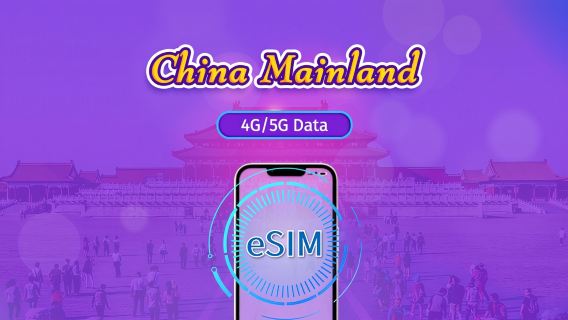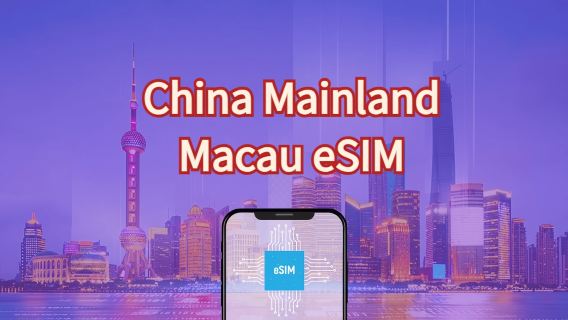
Plan to Travel to China? If you are still confused about China plug, adapters and voltage, read this blog and help you figure it out clearly!
Types of Power Plug Used in China
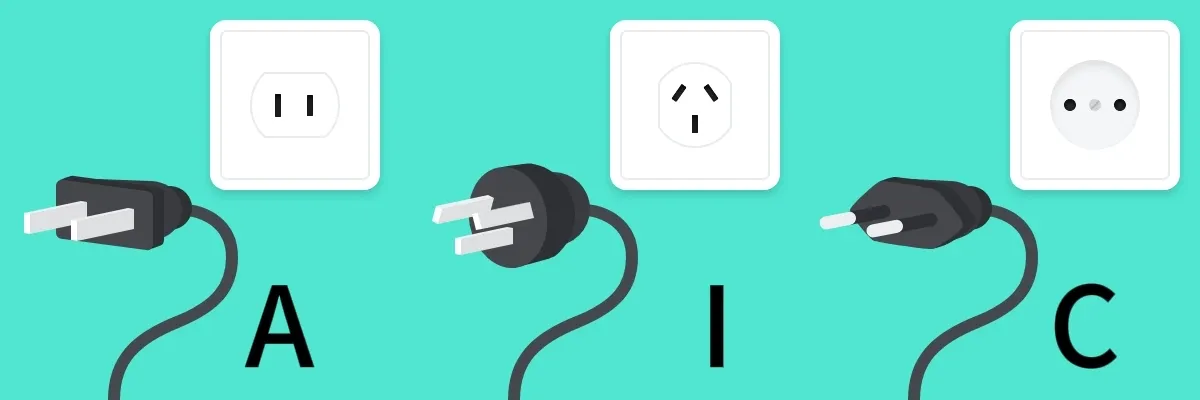
The voltage in Chinese mainland is 220V and the frequency is 50Hz. The plug types include Type A, Type C and Type I plugs. Type A and Type C are respectively two-pronged flat plugs and two-pronged round plugs. The Type I plug has three flat pins, forming an inverted Y shape. This guide will tell you everything about China plug!
Standard Socket in China

Most sockets in China are of three-hole or double-hole specifications. In some regions, double flat plugs can be directly used in Chinese sockets without an adapter.
However, if the plug itself is a three-hole plug with a ground wire, a three-to-two adapter needs to be installed before it can be used. In high-end hotels (especially those of foreign brands), some will adopt globally universal sockets. In addition, beside the bathroom countertop, there is usually a socket that is compatible with both 220V and 110V specifications.
Travel Adapters in China

1. What They Are:
A plug converter is a device that converts a plug into the type of plug that can be used on sockets in the destination country. However, a plug converter does not have the function of changing voltage. Crucially, most are NOT voltage converters. China uses 220V electricity (standard in Europe, Asia, Africa), so if your device is rated only for 110-120V (common in North America, Japan), you'll need a separate voltage converter to prevent damage. China primarily uses Type A (two flat pins), Type C (two round pins), and Type I (three pins in an upside-down V or two angled pins + grounding pin) sockets. A universal adapter covering these types is ideal.
2. Where to Buy:
You have several options. Before traveling you can purchase online via Amazon or Best Buy, or specialty electronics stores. Search for "China travel adapter," "universal travel adapter," or "Type A/C/I adapter." When get to China: They are widely available at airports (convenient but often expensive), large electronics markets and stores (like Suning, GOME), supermarkets (Carrefour, Walmart).
3. How to Use:
- Check Voltage: Before plugging anything in, VERIFY your device's voltage rating (look for "Input: 100-240V" or similar). Do not plug 110V-only devices directly into a Chinese socket without a voltage converter.
- Match Plugs/Sockets: Identify which plug type fits your device (e.g., US Type A/B, UK Type G, EU Type C/F). Select the corresponding adapter head on your universal adapter or choose a specific adapter that converts to Chinese socket types (A/C/I).
- Insert the Adapter: Push the plug of your device firmly into the adapter. Then, align the adapter's pins correctly with the holes in the wall socket and push it in fully.
Voltage Converters or Transformers in China
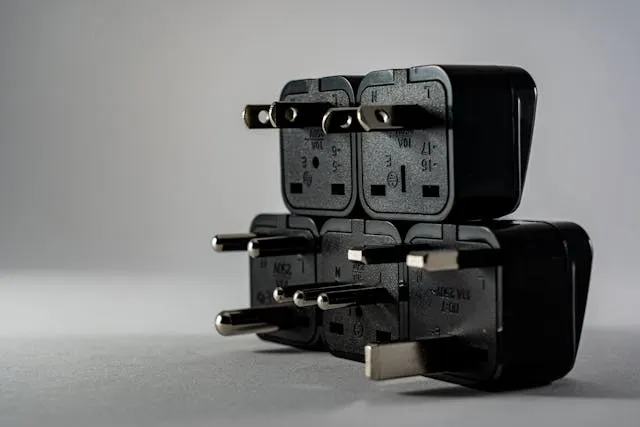
Voltage transformers are suitable for situations with different voltages. When the equipment you carry cannot adapt to the voltage at the destination, the transformer can help adjust the voltage to a suitable level.
The universal plug plug enables you to use local plug standards in different countries. When making a selection, it is necessary to ensure that the output power of the transformer is greater than or equal to the power required by the equipment, and the universal plug should support various plug shapes and have built-in fuses to prevent short circuits.
Do I Need a Transformer in China?
- You DO NOT need a transformer for MOST modern electronics:
- Dual Voltage Devices: Laptop chargers, phone/tablet chargers, camera battery chargers, USB power banks, and many other small electronics are almost always dual voltage. Check the label on the charger or device itself – look for an input voltage range like "Input: 100-240V" or "Input: 110-240V".
- You DO NEED a heavy-duty transformer/converter for SOME appliances:
- 110/120V ONLY Devices: Devices that are rated ONLY for 110V or 120V (common in North America, Japan, some Latin American countries) will be damaged or destroyed if plugged directly into China's 220V outlets without a step-down transformer.
- What Requires This: Older hair dryers/straighteners (check the label!), electric shavers (sometimes), basic coffee makers, clothes steamers, some hobbyist equipment, and other high-wattage appliances built solely for North American/Japanese voltage.
- AVOID Plugging These Items Altogether:
- Hairdryers & Straighteners (especially old/cheap ones) unless confirmed dual-voltage.
- High-wattage kitchen appliances (blenders, electric kettles).
- Heating appliances like clothes irons or space heaters (unless dual-voltage and low wattage).
What Voltage is Used in China?
The current voltage used in Chinese mainland is 220 volts, and the frequency of the power supply network is 50 Hertz. In fact, the earliest AC power grid on the Chinese mainland did not have a unified standard. It was merely a small-scale local power grid, with equipment provided by various developed industrial countries and different specifications. After 1949, the industrialization on the Chinese mainland fully shifted to the Soviet model, and the construction of power grids also followed Soviet standards. Since the Soviet Union adopted European standards, 220V/50Hz was eventually set as the power grid standard on the Chinese mainland.
How Voltage Differences Affect Devices

1. Immediate Damage (If Voltage is Too High)
If a device designed only for 110V is plugged into a 220V outlet:
- Overvoltage Surge: Components (capacitors, transformers, motors) receive twice the expected voltage.
- Result: Immediate overheating, melting, smoke, sparks, or permanent burnout. Common victims:
- Hairdryers, curling irons, electric kettles
- Motors in blenders or power tools
- Cheap/low-quality chargers without protection
2. Underperformance (If Voltage is Too Low)
If a 220V-only device is plugged into a 110V outlet:
- Insufficient Power: Motors won’t spin fast enough; heaters won’t reach full temperature.
- Result: Weak performance or failure to operate (e.g., a 220V coffee maker brewing lukewarm coffee).
- Exception: Devices with motors may overheat if stalled due to low voltage.
3. Safe Operation: Dual-Voltage Devices
Most modern electronics (phones, laptops, cameras) support 100–240V input. They:
- Auto-adjust voltage internally via switched-mode power supplies (SMPS).
- Only require a plug adapter for physical compatibility.
- Examples: Apple/Samsung chargers, Dell/Lenovo laptop bricks, Sony cameras.
✅ Tip: Look for Input: 100-240V or AC 110-240V on the device/charger.
4. Subtle Long-Term Effects
- Voltage Fluctuations: Even within "220V" countries, unstable grids cause brownouts (low voltage) or spikes (high voltage).
- Solution: Use surge protectors or voltage-stabilizing UPS units for sensitive devices (e.g., gaming PCs).
- Frequency Mismatch: Most devices tolerate 50Hz (Asia/Europe) vs. 60Hz (Americas/Japan), except timing-reliant devices (analog clocks, some audio gear).
Critical Comparison
Scenario | Risk Level | Outcome | Prevention |
110V device → 220V outlet | 🔴 High | Catastrophic failure/fire | Use step-down transformer |
220V device → 110V outlet | 🟡 Low-Moderate | Weak/no operation | Use step-up transformer |
Dual-voltage device | 🟢 Safe | Normal operation | Only plug adapter needed |
Global Electrical Standards Overview

Region | Voltage | Frequency | Common Plug Types |
|---|---|---|---|
North America | 120V ±5% | 60Hz | Type A (2-prong), Type B (3-prong) |
Japan | 100V ±6% | 50Hz (East) / 60Hz (West) | Type A, Type B |
Central America / Caribbean | 110-120V | 60Hz | Type A, Type B |
South America | Mixed: • 110-127V (Colombia, Ecuador, Venezuela) • 220-240V (Brazil, Chile, Argentina, Peru) | 60Hz (mostly) | Type A/C most common; Type L (Italy/Chile), Type N (Brazil) |
Europe | 230V ±10% | 50Hz | Type C (Europlug), Type F (Schuko), Type E (France), Type G (UK/Ireland) |
Russia / CIS | 220V | 50Hz | Type C, Type F |
China | 220V ±10% | 50Hz | Type A, Type C, Type I |
Australia / New Zealand | 230V | 50Hz | Type I |
India | 230V ±6% | 50Hz | Type D (Old), Type M (15A), Type C |
Middle East | 220-240V | 50Hz | Type G (UK-style) , Type C, Type D, Type H (Israel) |
Southeast Asia | 220-240V (most) 110-127V (Philippines, Taiwan) | 50Hz (mostly) 60Hz (Taiwan/Philippines) | Type A/C common ; Type G (Singapore/Malaysia); Type O (Thailand) |
Africa | 220-240V (most) 110-127V (Liberia, Ghana) | 50Hz | Type C, D, G, M, N |
Where to Charge Easily in China
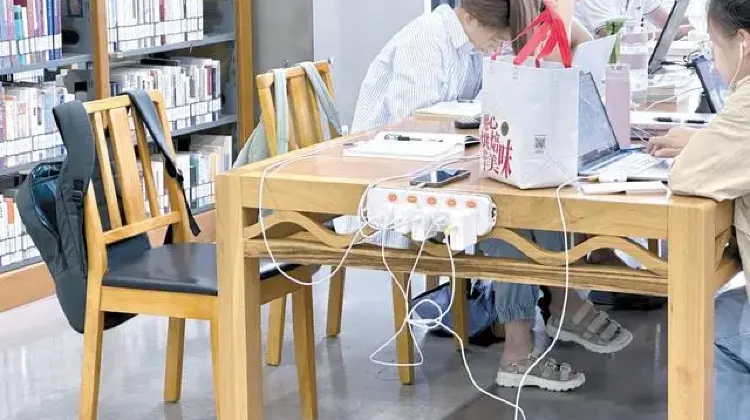
At present, most airports have set up shared power bank rental facilities, which are usually located in check-in areas, waiting areas, dining areas. For example, you can charge in many airports:
- At Haikou Airport, there are vertical power bank stations in the departure hall, arrival hall and waiting hall. If passengers need to rent or return them, they can find them within 5 minutes.
- Shared power banks are also available at Xi 'an Airport outside the security check area of the terminal building, in the departure hall, beside the food market, at the entrance of the restrooms, in the arrival hall, at the subway entrances, and inside the GTC (Ground Transportation Center).
- At the Capital Airport, more than 3,800 sets of charging panels with two groups of USB-A and USB-C interfaces have been installed in the middle of the seat backs in the terminal building, and the total number of charging interfaces exceeds 15,000.
- The terminal building of Beijing Daxing Airport is equipped with centralized charging areas and charging bars, along with power sockets and USB charging interfaces, to meet the charging needs of passengers for various devices.
Hotels Recommendation
FAQs about China plug
What is the voltage and frequency used in China?
Voltage: 220V Frequency: 50Hz China operates on a 220V electrical system, so if your device is designed for 110V (like in the US), you will need a voltage converter or step-down transformer. Always check if your devices support dual voltage (110V-240V) before plugging them in.Is the voltage in China compatible with my phone charger or laptop?
Many modern electronic devices, like phone chargers and laptops, are designed to support a range of voltages (100V-240V). Check the label on your device to see if it can handle 220V. If it says "100-240V", you only need a plug adapter, not a voltage converter.Do I need an adapter for my electronic devices in China?
Yes, if your device uses a different plug type (like Type B or Type C), you’ll need a plug adapter to fit China’s sockets. Additionally, check the voltage compatibility of your device. If it doesn’t support 220V, you'll need a voltage converter.What should I do if my device doesn’t work with the voltage in China?
If your device isn't compatible with 220V, you’ll need a voltage converter to step down the power to your device’s required voltage. Be sure to buy one rated for the wattage of your device.Are there charging stations or outlets available in hotels and public places?
Yes, most hotels in China provide outlets in the rooms for international travelers, often with adapters. Airports, cafes, and malls also typically have charging stations or multi-port USB chargers.




 328120 booked
328120 booked
